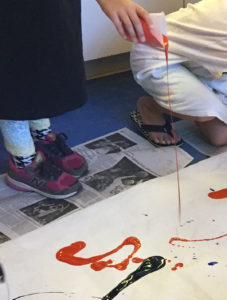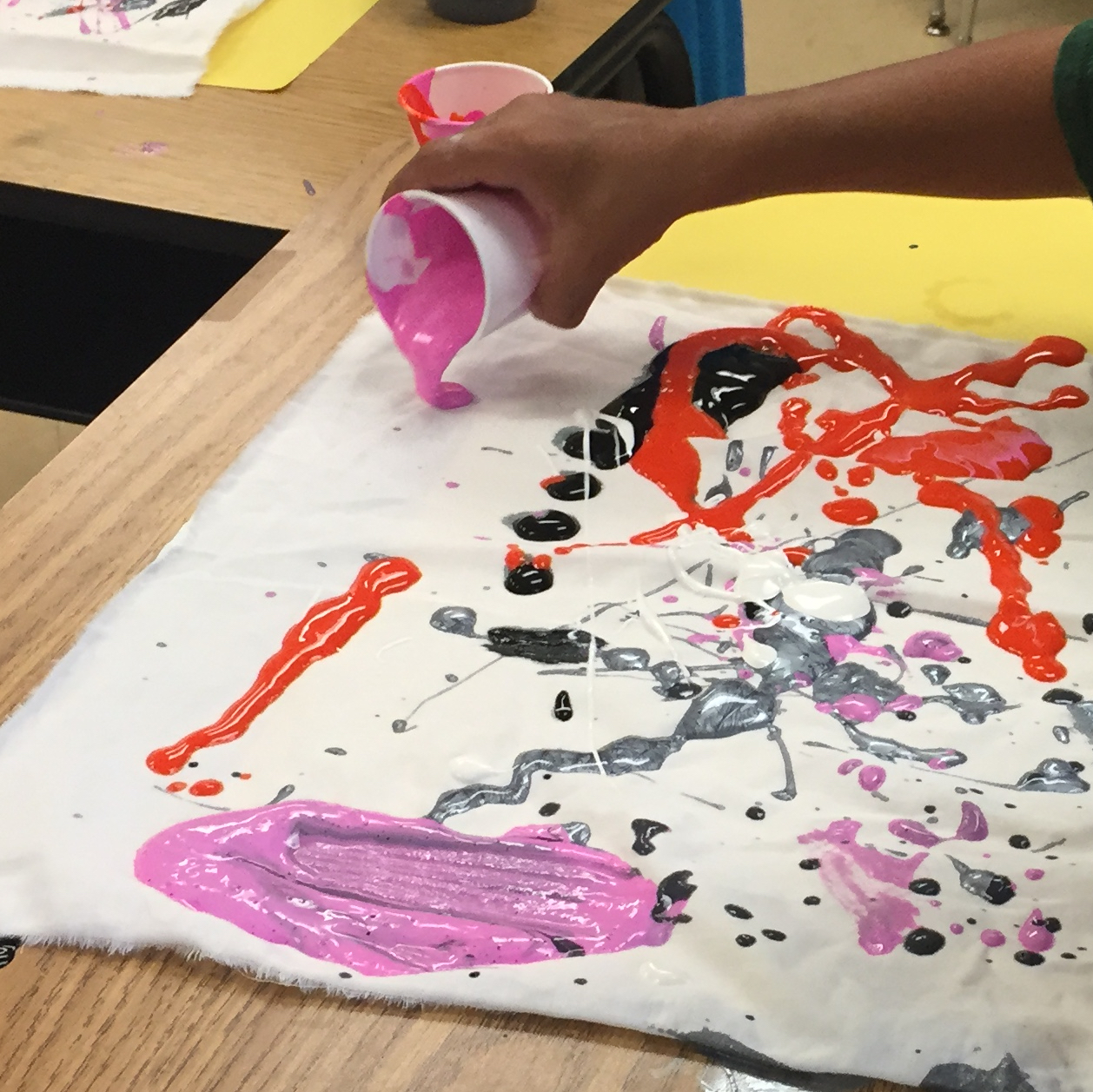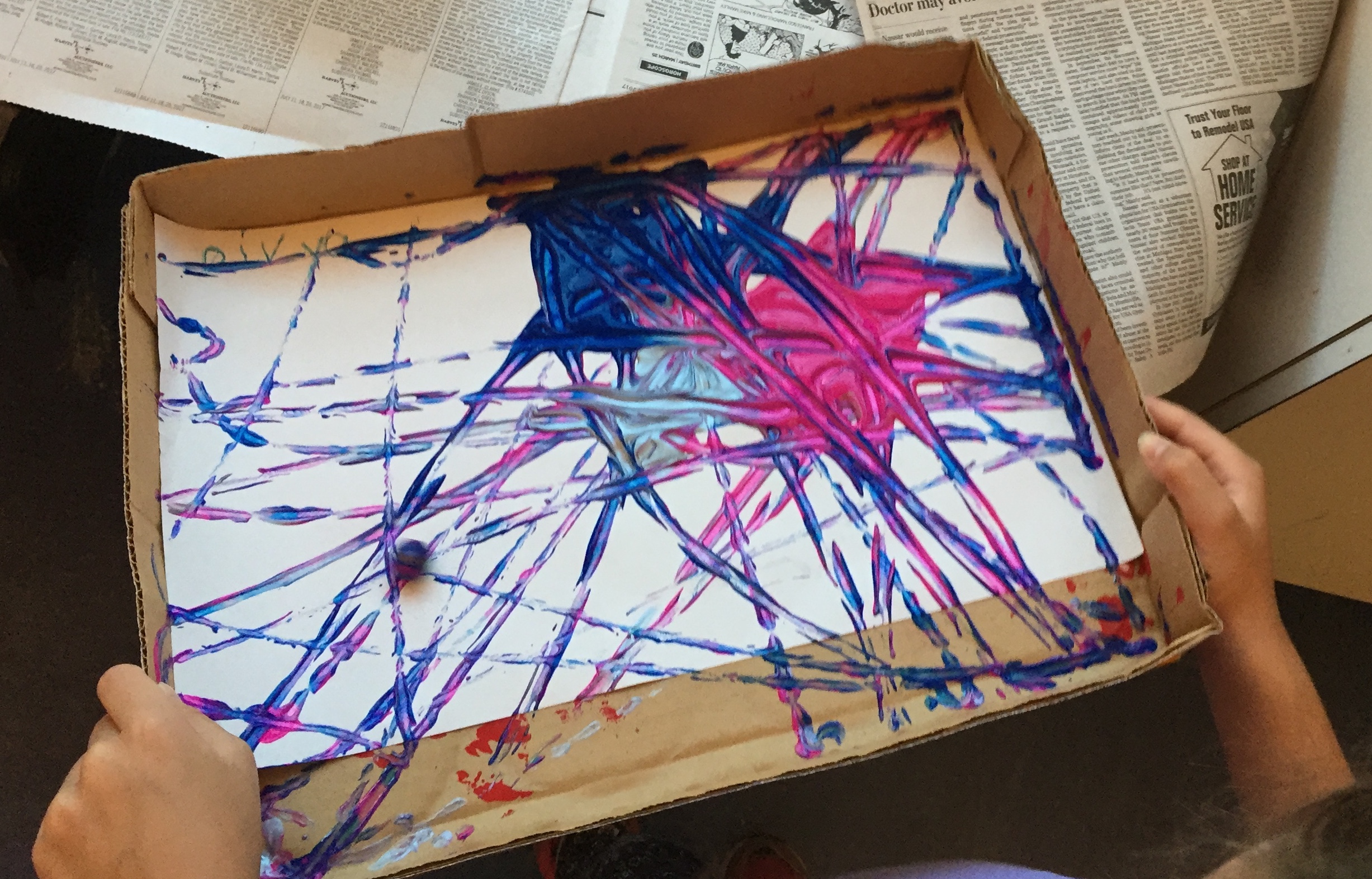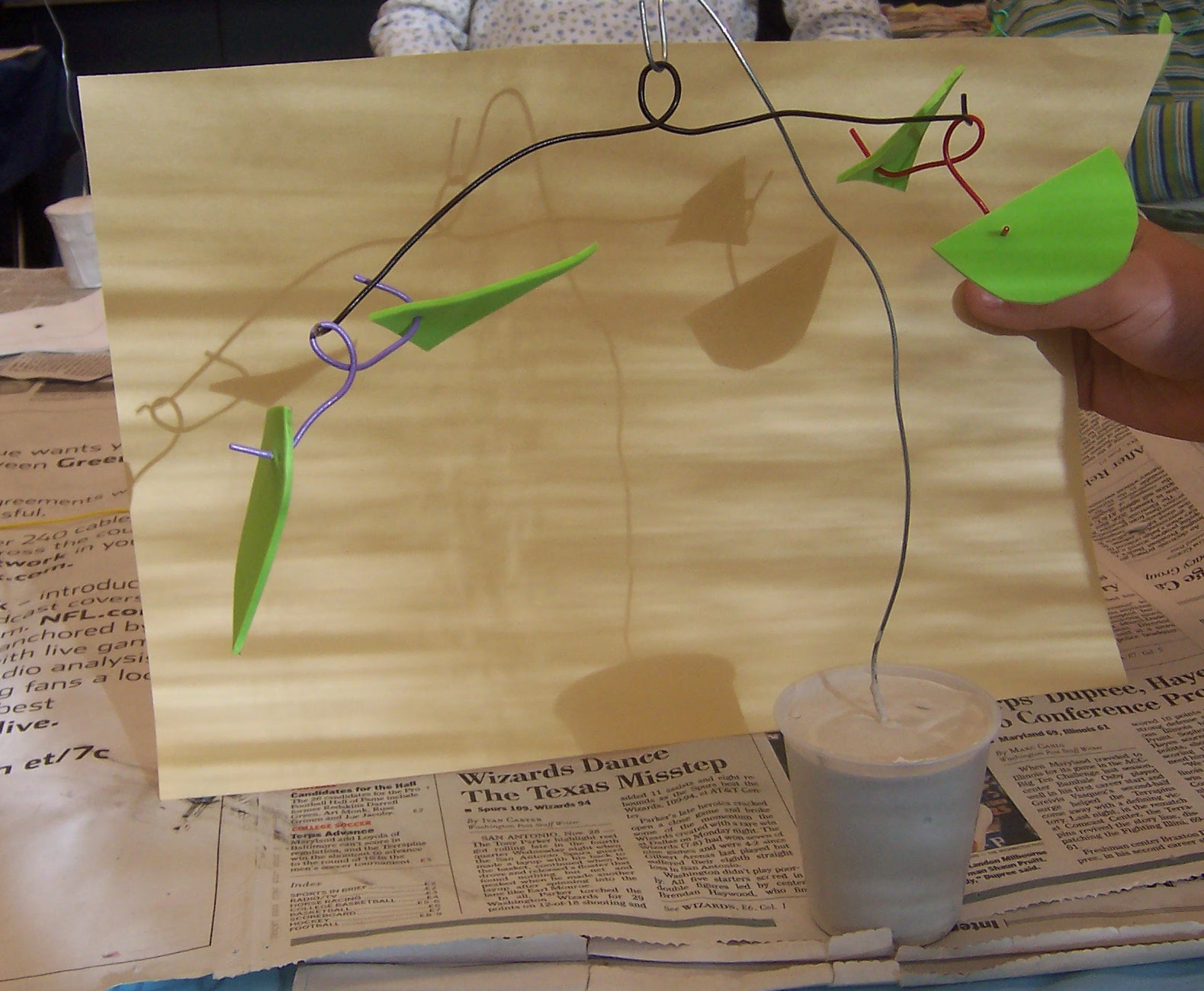They can say the word but can they explain what it means? The “illusion of explanatory depth”
By Peggy Ashbrook
Posted on 2019-05-13
 The use of a particular word can support children’s communication about their understanding of natural phenomena and sometimes obscure the amount or depth of their understanding. A full day preschool class of 4-year-old children explored the use of motion in creating art over several weeks. They began by pouring, dripping, and flinging paints of various viscosities from cups onto sheets spread on the ground. As children prepared to work, teachers asked, “How can we get paint onto the cloth without using brushes?” “How the paint be pushed or pulled to the cloth?” “How can we make the paints do what we want them to?” One child said “Gravity does it!” and teachers defined it as a force that pulls objects to the Earth. After that when asked, “How did you make that happen?” many children would simply say, “Gravity,” although they had manipulated the cups and paint while taking the pull of gravity into account. Their understanding of gravity was that “it makes things fall” but were not clear that this is a pull.
The use of a particular word can support children’s communication about their understanding of natural phenomena and sometimes obscure the amount or depth of their understanding. A full day preschool class of 4-year-old children explored the use of motion in creating art over several weeks. They began by pouring, dripping, and flinging paints of various viscosities from cups onto sheets spread on the ground. As children prepared to work, teachers asked, “How can we get paint onto the cloth without using brushes?” “How the paint be pushed or pulled to the cloth?” “How can we make the paints do what we want them to?” One child said “Gravity does it!” and teachers defined it as a force that pulls objects to the Earth. After that when asked, “How did you make that happen?” many children would simply say, “Gravity,” although they had manipulated the cups and paint while taking the pull of gravity into account. Their understanding of gravity was that “it makes things fall” but were not clear that this is a pull.
When introducing additional activities teachers asked children to plan what push or pull actions they could make, and how they will use the pull of gravity, while using materials to create the artwork they wanted. They rolled marbles through paint on a paper-lined tray as they held it while tipping it back and forth; used a salad spinner to spin paper plates holding pools of paint—faster to spread the paint wider; and built mobiles attaching pieces that balanced (more or less) and turned freely in moving air.

Over time, and with discussion, children’s work moved from “let’s see what happens” with these materials to “what can I make happen?” By mixing in cornstarch children chose how thick to make their paint depending on whether they wanted the paint to pour and spin out, or “blob.” They chose to try using bigger balls in the painting tray, and chose to drip paint from spoons. Some began saying that “gravity is pulling the paint down when I pour” and that the marbles were pulled across the paint by gravity when children tipped the trays. They got the connection between the motion of the paint and a force called gravity, something to build on as they grow and learn more.
Older children also use vocabulary words without understanding the concepts they describe. Prompted by a blog post by Kevin Anderson of the Wisconsin Department of Public Instruction, middle and high school teachers are discussing this on the NSTA NGSS email listserv. Anderson described his own experience explaining what he meant when he used a word to explain a phenomenon. Students who use terms but don’t fully understand them give the “illusion of explanatory depth,” a description coined by Leonid Rozenblit and Frank Keil in 2002. In the listserv discussion, NSTA members recommend asking students questions such as, “Tell me what this means to you?” “Talk to me about it,” and “Tell me more.” These are useful questions to ask preschoolers to help them state their understanding.
Resources
Anderson, Kevin. 2019. Students Using Proper Science Vocabulary Can Mask Authentic Understanding. Wisconsin Science and STEM Education blog. April 17, 2019.
https://wisdpiscience.blogspot.com/2019/04/students-using-proper-science.html
Rozenblit, Leonid, and Frank Keil. 2002. The misunderstood limits of folk science: an illusion of explanatory depth. Cognitive Science. Cogn Sci. 26(5): 521–562.
Disclaimer: The views expressed in this blog post are those of the author(s) and do not necessarily reflect the official position of the National Science Teaching Association (NSTA).





